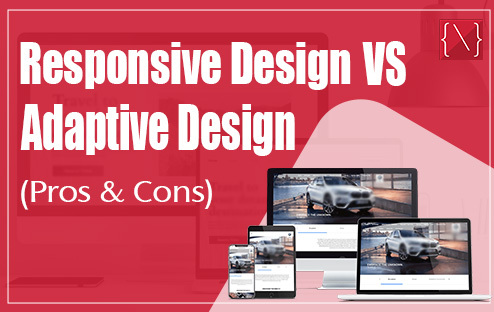
In today’s multi-device world, ensuring your website delivers a seamless experience across desktops, tablets, and smartphones is no longer a luxury, it’s a necessity. This is where responsive design and adaptive design come into play. Both approaches aim to create websites that adapt to different screen sizes, but they achieve this in fundamentally different ways. Choosing the right approach for your website depends on your specific needs, target audience, and budget. Let’s go deeper into the pros and cons of each method to help you make an informed decision.
Responsive Design: Fluid and Flexible
Responsive design is the current industry standard. It utilizes a single website layout that adjusts and reflows based on the user’s screen size. This is achieved through the use of CSS media queries, which are essentially sets of rules that dictate how the website elements should behave at different screen widths.
Pros of Responsive Design:–
- Reduced Development and Maintenance Costs: You only need to build and maintain one website, making it a more cost-effective solution.
- Flexibility: Responsive layouts can adapt to an infinite number of screen sizes, future-proofing your website for new devices and resolutions.
- Search Engine Optimization (SEO) Friendly: Search engines like Google favor mobile-friendly websites, and responsive design inherently delivers a good mobile experience.
- Consistent User Experience: Users will encounter the same branding and content across all devices, fostering a sense of familiarity and trust.
Cons of Responsive Design:–
- Potentially Less Control Over User Experience: Since the layout adapts automatically, you might have less granular control over how elements appear on specific devices.
- Complexity for Complex Layouts: Websites with intricate layouts or heavy use of multimedia might require more development effort to ensure a smooth responsive experience.
Adaptive Design: Tailored Experiences
Adaptive design, on the other hand, utilizes multiple pre-defined layouts optimized for specific device groups (e.g., desktops, tablets, mobiles). When a user accesses the website, their device is detected, and the most suitable layout is served.
Pros of Adaptive Design:–
- Highly Optimized User Experience: With dedicated layouts for different devices, you can create a highly tailored experience for each user group, potentially leading to better engagement.
- Faster Loading Times: Since users only receive the layout designed for their device, there’s less content to load, potentially improving website speed.
- Ideal for Complex Layouts: Websites with rich media or intricate layouts might benefit from the more structured approach of adaptive design.
Cons of Adaptive Design:–
- Increased Development and Maintenance Costs: Building and maintaining multiple layouts requires more time and resources.
- Limited Scalability: New device sizes or resolutions might require creating entirely new layouts to accommodate them.
- Potential for Inconsistent User Experience: The user experience can vary depending on the device used, which might be jarring for some users.
Choosing Between Responsive and Adaptive Design
So, which approach is right for you? Here are some factors to consider:
- Website Complexity: For simpler websites with straightforward layouts, responsive design is a great choice. For complex websites with rich media, adaptive design might offer advantages.
- Target Audience: If your target audience primarily uses desktops, responsive design might suffice. If your audience heavily relies on mobile devices, adaptive design might be worth considering.
- Budget: Responsive design is generally more cost-effective due to the need to maintain only one website.
- Future-Proofing: Responsive design is more adaptable to future screen sizes and devices.
Ultimately, the best approach depends on your specific needs and priorities. Consider your budget, target audience, and website complexity to make an informed decision.
Conclusion
Both responsive design and adaptive website design have their merits and drawbacks. By understanding the strengths and weaknesses of each approach, you can choose the method that best serves your website’s needs and delivers an optimal user experience across all devices. If you’re still unsure, consulting with a web design professional can help you make the best choice for your unique situation.
ALSO READ: Web 2.0 vs Web 3.0- Know The Differences & Similarities
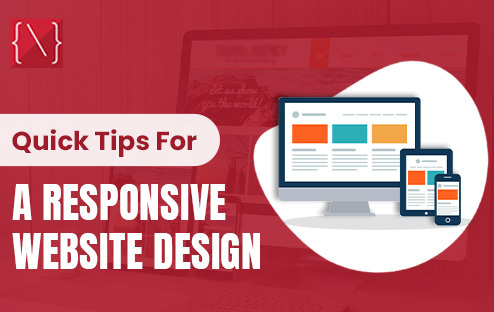
In today’s digital age, having a responsive website design is crucial for any business or organization. With the majority of internet users accessing websites through their mobile devices, having a website that adapts to different screen sizes and devices is essential for a positive user experience. In this blog, we will discuss some quick tips for creating a responsive website design that will help you attract and retain more visitors.
1. Use a Mobile-First Approach: When designing a responsive website, it is important to start with a mobile-first approach. This means designing the website for mobile devices first and then scaling it up for larger screens. This approach ensures that the website is optimized for smaller screens and then adjusted for larger ones, rather than the other way around.
2. Keep it Simple: A cluttered and complicated website can be overwhelming for users, especially on mobile devices. Keep your design simple and clean, focusing on the most important elements. This will make it easier for users to navigate and find the information they are looking for.
3. Utilize Responsive Images: Images play a crucial role in website design, but they can also slow down the loading speed of a website. To ensure a fast and responsive website, use images that are optimized for different screen sizes. This will allow the website to load quickly on all devices without compromising on the quality of the images.
4. Use Scalable Vector Graphics (SVGs): SVGs are a great option for website design as they can be scaled up or down without losing their quality. This means that they will look crisp and clear on all screen sizes, making them perfect for responsive designs.
5. Make Use of CSS Media Queries: CSS media queries allow you to specify different styles for different screen sizes. This makes it easier to create a responsive design that adapts to different devices. You can use media queries to adjust font sizes, layouts, and other design elements according to the screen size.
6. Test, Test, Test: It is important to test your website on different devices and screen sizes to ensure that it is responsive and functioning properly. This will help you identify any design flaws or issues that need to be addressed.
7. Use a Responsive Framework: If you are not comfortable with coding and designing a responsive website from scratch, you can use a responsive framework. These frameworks provide pre-built templates and components that can be easily customized to create a responsive design.
8. Don’t Forget about Navigation: Navigation is an essential aspect of website design, and it becomes even more crucial for a responsive website. Make sure that your navigation is user-friendly and easy to use on all devices. A hamburger menu or a simple navigation bar can work well for mobile devices.
9. Optimize for Touchscreen Devices: With the rise of touchscreen devices, it is important to design your website with touch interactions in mind. This means providing enough space between clickable elements and using larger buttons and links for easy navigation on smaller screens.
10. Keep the User in Mind: Ultimately, the key to a successful responsive website design is keeping the user in mind. Put yourself in the shoes of your target audience and think about what they would want to see and how they would want to navigate through your website. This will help you create a design that is user-friendly and responsive.
In conclusion, having a responsive website design is crucial for the success of your online presence. By following these quick tips, you can create a website that adapts to different devices and screen sizes, providing a positive user experience for all your visitors. So, make sure to keep these tips in mind when designing your next website.

In today’s digital age, having a website is essential for businesses and individuals alike. However, it’s not enough to simply have a website; you must also focus on creating a positive user experience (UX) for your visitors. A great user experience can significantly impact your website’s success, from attracting and retaining users to boosting conversions and customer satisfaction. In this blog post, we will discuss some valuable tips to help you improve your website user experience.
- Responsive Design: One of the fundamental aspects of a good user experience is ensuring that your website is responsive. With the ever-increasing use of mobile devices, it’s crucial that your site adapts seamlessly to different screen sizes. A responsive design ensures that users can access and navigate your website easily, regardless of the device they are using.
- Clear and Intuitive Navigation: Navigating a website should be effortless for visitors. Implementing a clear and intuitive navigation structure will help users find the information they’re looking for quickly and efficiently. Consider using a logical hierarchy of menus, including drop-downs or breadcrumbs, to provide users with a sense of orientation and allow them to navigate your site with ease.
- Streamline Content and Structure: Presenting your content in a structured and organized manner is vital for a positive user experience. Break your content into sections and use headings, subheadings, and bullet points to make it scannable. Be concise and eliminate unnecessary fluff. Users should be able to skim through your content and grasp the main points without any confusion.
- Optimize Page Loading Speed: In today’s fast-paced world, users have little patience for slow-loading websites. A website that takes too long to load can lead to frustration and increased bounce rates. Optimize your website’s performance by compressing images, minifying CSS and JavaScript files, and leveraging browser caching. Regularly monitor your site’s loading speed and make necessary adjustments to ensure optimal performance.
- Use Visuals Wisely: Visual elements such as images, videos, and infographics can enhance the user experience if used judiciously. High-quality images and videos can grab attention, convey information effectively, and create an emotional connection with your audience. However, be cautious not to overload your website with heavy media files, as this can negatively impact loading times.
- Incorporate Consistent Branding: Consistency in branding across your website is essential for a cohesive user experience. Use consistent colors, fonts, and imagery that align with your brand identity. This helps users recognize your brand easily and builds trust and familiarity. Ensure that your logo and branding elements are prominently displayed throughout the site, especially on the homepage.
- Implement Clear Call-to-Actions (CTAs): A clear call-to-action is crucial to guide users towards their desired actions on your website, whether it’s making a purchase, signing up for a newsletter, or contacting you. Use concise and action-oriented language for your CTAs, and make them visually distinct from other elements on the page. Experiment with different placements and designs to find the most effective CTA strategy for your audience.
- Optimize Forms and User Input: Forms play a significant role in gathering user data and enabling interactions on your website. Ensure that your forms are user-friendly and easy to fill out. Minimize the number of required fields and use smart form validation to provide real-time feedback to users. Implement autofill capabilities whenever possible to streamline the process further.
- Prioritize Accessibility: Designing your website with accessibility in mind ensures that all users, including those with disabilities, can access and navigate your content. Use descriptive alt tags for images, provide captions for videos, and ensure sufficient color contrast for text readability. Implementing accessibility features not only helps a wider audience engage with your website but also demonstrates your commitment to inclusivity.
- Test and Gather User Feedback: Continuous testing and gathering user feedback are essential for improving your website’s user experience. Conduct usability testing with real users to identify any usability issues or areas for improvement. Collect feedback through surveys, feedback forms, or user analytics tools. Use this valuable input to make data-driven decisions and refine your website to better meet the needs and expectations of your audience.
Conclusion:–
Providing a positive user experience is crucial for the success of your website. By following these tips, you can create a website that is intuitive, visually appealing, and optimized for performance. Remember to regularly monitor and analyze user behavior to identify areas for improvement and stay updated with evolving trends and technologies. By prioritizing user experience, you can enhance engagement, increase conversions, and establish a strong online presence for your brand or business.
ALSO READ: Why Custom 404 Page is More Important for a Better User Experience
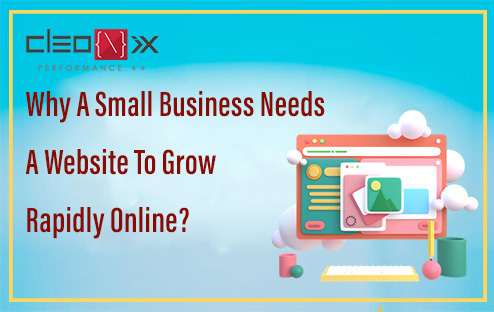
In the recent years, there have been a huge increase in the the number of small businesses. Particularly after the COVID-19 period, when many people lost their jobs due to the worldwide lock down but successfully shifted to starting their own businesses, be it a online or offline business. With the rise of so many businesses, naturally the competition has also grown. With tough competition, it is necessary for small business owners to be equipped with each and every tool and facility needed to take their business to the next level, to help them grow. Owning a business website is one such feat.
In today’s modern world, where almost every people, all over the world, has access to the internet or the World Wide Web, it is very important for businesses to have a website. A website genuinely helps businesses to reach out to the mass and easily convey the purpose of your business and information about its services or products. According to SCORE reports, around 97% of people search for a product or service before taking the buying decision. So, if your business does not have a website, you are missing out on huge number of potential customers.
Let us discuss in details how a website helps small businesses to grow in different ways:-
Building Customer Base
Gone are the days when people used to roam the markets, go to different stores looking for products. Today, most people search the internet through their phones or computers, constantly looking for new products or services. A website enables your business to be found online. It generates web traffic, conveying information about your business and its services or products to potential customers. The more people know about your business, the more potential your business have of attracting more and more customers.
Credibility
Now-a-days, most people do not trust a business without a website. It has become a habit of people to check out a particular product or service over the internet before indulging in it. A website allows people to gain knowledge about your business and its purpose thus creating credibility. As people starts to trust your business, they will be genuinely interested in your products or services. Many businesses have only social media pages and it helps upto a certain level, but having a website really makes a difference in building trust and a loyal customer base.
Cost Efficient Advertising
Many small businesses or new start-ups are tight on budget so they can not spend much on the different forms of advertising like posters, hoardings, billboards, TV advertising, etc, and without proper advertising, your business won’t reach much people and won’t grow. A website helps to save cost on advertising. You can add as much details as you want in your website, without any kind of budgetary constraint, which would help people to know more about your business. The information can be accessed by anyone – anywhere, anytime.
Online Sales
Apart from helping your business to reach more people, a website also gives you the option of making online sales. With a website, you are no longer restricted to making sales only from your physical store. There may be potential customers who are interested in buying your product or service but they are not being able to do so because of the physical distance between them and your place of operation. If you provide the option of online purchase through your website, it has the potential of doubling your sales which will result in your business growth.
Competitive Advantage
According to various reports, most people, now-a-days, go on the internet and research before making a purchasing decision. They want to be informed about which product to buy and from where to buy. Without a proper website, providing such information about your business, you are at a disadvantage. If you have a direct competitor who has a website and is using it in their marketing strategy, you will lose all your potential customers to them. Having a solid, cutting-edge website will help you to be at an advantage over your competition.
With everything said, you must understand that a website development is very essential for any kind business to survive and grow in today’s online competitive business market. A website helps to put your business on the map, letting people know that you exist. Small businesses should absolutely host their own websites if they want to grow.
ALSO READ: How Web Design and Development Can Amplify Your Business?
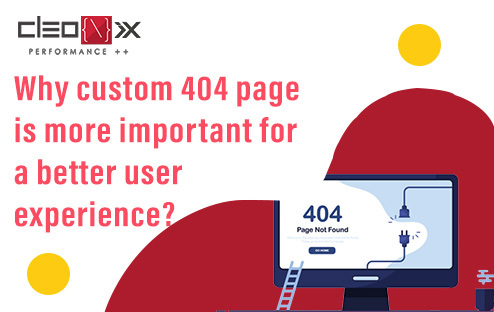
When you use the internet and surf between websites, at some point or the other, you will come across a page which will display the message – ”Sorry, page not found”. This particular page is called the 404 error page. According to google :
“a 404 page is what a user sees when they try to reach a non-existent page on your site (because they’ve clicked on a broken link, the page has been deleted or they’ve mistyped a URL).”
So, when a person clicks on a broken link or tries to enter a page that has been deleted or makes a mistake of typing a wrong URL, that’s when a 404 page appears as there is nowhere else to go.
404 error pages are generally frustrating to the visitors but if it is used correctly it can help not only to retain visitors but keep them on your website and pursue them to check out other sections of your website even if they had landed on the error page which is why custom 404 pages are very important for a better user experience.
Features to Include
Some basic features that your custom 404 page needs to include for making it more attractive are :-
• NAVIGATION –
This is first and most important aspect of a custom 404 page. Landing on an empty or a stagnate page with just the error message displaying can be highly irritating and frustrating. You need to at least customize it so that your 404 page has a redirection link to your homepage or a search option through which visitors can search what they are looking for. Many custom 404 pages goes beyond and offers additional links to other contents within the website. Some even offer a ‘report filling’ section through which visitors can report about the error or ‘chatbox’ which can help visitors to find what they are looking for. This way any visitor who lands your error page will keep on engaging with your website and you will not lose the traffic.
• TONE –
The overall tonality of your 404 error page should sync with your website. This means the theme, colour, design and feel of your error page should match with your website. You can add images and logos of your website to the error page, giving it an attractive look. Some error pages even features the whole menu section of the website giving the page an overall same look as the main site.
• CREATIVITY –
Technically, there is no limit to how much creative you can get with your custom 404 page. You can add jokes, quirky quotes, and other interesting and fun elements. In the end, you just need to be creative so that when your visitor land on a error page, they are a bit entertained before they are redirected.
Importance of Custom 404
Custom 404 pages help to enhance the user experience. Basic 404 pages are boring and does not help in anyway. If a visitor lands on your default 404 page, he/she will be simply confused and would want to quickly get out of there meaning you will lose web traffic. A custom 404 page does the opposite. It helps to retain the visitors and web traffic. You can customise your page in ways which can help to take the confusion away. Perhaps, someone typed in the wrong address, or may be the page they are looking for does not exist anymore. Your custom 404 pages can help visitors to understand the problem by displaying the reason.
Another way in which custom 404 helps visitor is by redirecting them to what they were looking for or other relevant topics. When your 404 page feature links which redirects visitors to other contents in your website, visitors may halt and check them out. This way you don’t lose any web traffic. And if your error page is quirky and interesting enough, visitors might even share them which will attract more users and web traffic as a result.
Ultimately, it needs to be said that with today’s competitive online market and SEO up rise, you can not just ignore the importance of a custom 404 page. Even if you have a high quality website with intricate developmental details, you can not guaranty that your visitors won’t ever face the 404 error page which is why you need to have a solid custom 404 page.
Also Read: How to Create An Attractive Landing Page to Increase Sales

Landing page, perhaps, is the most crucial element of a business website. A landing page layout can simply determine how well the business will thrive in the online space. if you own a business company and have your brand available on the digital sphere, then you must be able to create an attractive landing page to increase customers and sales numbers. Therefore, in this blog, we’ll explore the different ways you can create an attractive landing page for your business to increase traffic to your website. Watch out.
Landing Page – What It Does
Before getting into the specific details, let’s understand, in brief, what a landing page is about. It is that page of a particular website that you land on whenever you click an ad on search engines or social media sites. For example, if you own an online e-commerce store, then the landing page of your e-commerce website should have all the information about your website, its’ products, how to purchase them, the feedbacks, specific offers, and many more. Thus, a landing page has pretty much all the necessary details about that particular website.
Create Attractive Landing Page to Increase Sales
To increase the conversion rate of a business, it is necessary to understand the nuances of an attractive landing page and how to create one. Here are some ways you can create an effective landing page.
Keep the Page Clean
Nothing can be more attractive than a clean and fast-loading landing page. No matter how interesting your website content and offers are, if it takes longer to arrive on the landing page, then it’s a waste already. To ensure seamless landing, you must keep the page uncluttered and organized. A clumsier landing page turns down the viewers as they fail to find what they want, easily. Keep it simple with relevant images and color tones.
Focus on the Content
Be precise with the content of your landing page. Try to avoid flowery and exaggerated statements that might not match with your products, services, or the brand. Keep the language as simple as possible so that viewers of all strata can understand and relate. Define your business goal with less words and try catchy one-liners to attract the eyes of the customers.
Gain Customer Trust
Customer trust is the ultimate factor that can decide how well would your business survive. Even if they click the ad and arrive on the landing page, if you cannot build their trust at the first glance, then that click will never convert into a purchase. The best way to gain the trust of the customer is to add real-time buyer reviews, testimonials, and appreciation posts from other brands. You can also add other brands’ logos with whom you have collaborated, on your landing page.
Add Attractive Offers
What interesting elements are you offering your customers when they come to the landing page of your website? Ask yourself this question before designing the page. When a viewer visits your website, he/she might have expected some interesting offers that other similar stores are probably not providing. Therefore, grab your customers’ attention by adding attractive offers. If they find your offer alluring, then your conversion rate will increase automatically.
The Bottom Line
Creating an attractive landing page is quite an easy job if you know what to keep and what not to. It is an amazing marketing method that can increase the conversion rate of your online business and help building your brand image while increasing the sales figure.
Read Also: How Web Design and Development Can Amplify Your Business?

Introduction
In this growing digital world, you can easily miss out on the opportunity created by the new technology in the market. The situation can get even worse when businesses don’t have the required expertise for tapping these changes. Well, this can be the case for every organization that doesn’t have enough knowledge about web designing and development.
With the introduction of web development, the whole structure and operations of the business industry have changed drastically. So, for every aspiring businessman who wants to know about web development and design, this blog is for you. Here, we will discuss how web design and development can amplify your business. Let’s go.
Benefits Of Web Design and Development
Easy Navigation :-
The users must experience easy navigation with the help of a successful online platform. See, the thumb rule is that the information on your website should be easily accessible. For this, your website should fast load speed. Remember, easy navigation guarantees organic traffic.
SEO :-
Search Engine Optimization (SEO) is perhaps the most important aspect of your website. See, millions of websites are fighting with each other to reach the top position among the search results. So, if your website is SEO-friendly, it will reach the relevant search results. As a result, you will attract customers and generate sales.
Attractive Visual Content :-
Selling your products and services in the digital world is not an easy job. It can get more complicated if the company chooses to provide only text to describe its products. See, most customers don’t have the patience to read 300 words of the product description. They will simply leave your site. So, use images to convey information about the company and its services.
Increasing The Sales Figure :-
The success of any business is directly related to the sales figure. Well, web design and development can generate sales for your company. Since the pandemic, the growth in the eCommerce industry has been substantial. In fact, numerous customers only prefer online shopping for the sake of social distancing.
Attracts New Customers :-
One of the primary objectives of any business is to attract and reach new customers. Well, there are numerous methods to achieve success over this. But one of the most celebrated and proven methods is web designing. It opens the door to the entire digital world. In this case, you can literally say that sky is the limit.
User Engagement :-
There was a time when the business structure was based around brick and mortar. But not anymore, the times have changed with services becoming digital. This is one of the prime reasons that most organizations want to develop interactive websites. It will help them to increase user engagement and develop their online presence.
Marketing & Advertising :-
For any startup, making your presence known in this digital world is a success in itself. Websites can help you increase your market presence. So, customers will know about your products and services. Of course, marketing and promotions also play a vital role. But without having a website, digital marketing is basically of no use.
Lifetime Customers :-
As your company grows and expands its horizon, it is very important to have a loyal customer base. But developing a loyal client base is not an easy job. The situation can get worse if the company policy and tactics are bad. However, in such cases, web designing can help you out. Through your website, you can identify loyal customers and create an effective strategy to retain them.
Brand Creation :-
Nowadays, the success rate of any business entirely depends on how well it can establish its brand in the digital world. You don’t believe me? Well, just do a bit of research and you will exactly know what I am talking about. With an interactive and engaging website, you can reach new customers and develop an online presence and brand.
Conclusion
For any business, it is extremely important to know how web design and development can affect their success. Remember, without having a proper website, it is almost impossible to establish your business. So, take note of the above points and work accordingly. Good Luck.
Also Read:- The Role of Digital Marketing in Business Development
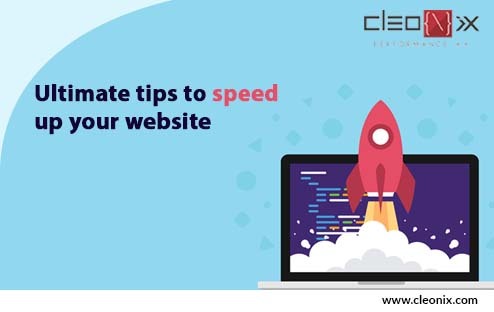
We all know how important it is to have a website that has a super-fast loading speed. In today’s world, where everything has come within our finger’s reach by the means of technology and its use of the internet, websites are basically acting as the channels or portals to another realm, where sits the products, services or information that one seeks to find. It is that easy for the end-user to look-up something they need over the internet and access it that much easily. A process that is almost entirely hassle-free!
Except, when they click on a website, it starts to load, and within the extra few seconds that the site might have taken to load, the consumer will almost certainly change their minds about purchasing a product or purchasing it from the same website. Now, if you have a website, you certainly will not want this to happen. Hence, speed of a website is considered as one of the most crucial factors that any business or individual needs to pay attention to.
An optimum loading speed for a website is considered to be within 1 second. Between 1 to 3 seconds, it is considered as an average speed and any longer than that, and the website tends to lose on its visitors’ attention and hence, chances of conversions. That causes such a direct loss to the revenue generation for any business that conducts sales and business via the online medium (i.e. e-commerce websites). Obviously, this needs to be taken care of with a lot of website optimization work. So, what all can be done to make sure a website is running at its optimum speed? Let’s have a look:
• Using an optimized server hosting: Hosting style of the server plays a very crucial role in determining the speed of the website and hence should always be optimized as per the requirements of the site.
• Utilizing the browser’s cache: Whenever possible, when the browser cache is utilized to access resources, the website always loads faster as the browser isn’t required to find the resources from the original source, hence making it a faster process.
• GZIP compression: A golden rule is to use GZIP compression to reduce the file size by 70%. As the reduced file size is easier to transfer from the server to the browser, the website speed is increased significantly.
• Using a CDN: CDN (or a Content Delivery Network) works to deliver content more efficiently to the users as it is a collection of web servers present across multiple locations. For this, the servers with the quickest response time or lowest network hops are selected to deliver the content, from the closest location, hence speeding up the process.
Read Also:- What should not be included on your website?
• Identifying and removing unnecessary items: Often a website has a lot of installed software and modules that might not be even needed any more. Configuration of the MySQL to decrease the cache size frees up a lot of space. Also, Apache configuration can be done to disable modules that are not required.
• Reducing re-directs: Redirects from one URL to another lead to extra HTTP requests and hence slows down the website by causing increased latency. Hence, it is very necessary to limit the redirects.
• Image optimization: You should make sure the images on your website are optimized so that they are cropped down to the smallest size possible without affecting the quality, saved using the JPEG format and have valid src attributes added to them.
• Avoid query strings from static resources: As any link with “?” in the URL will not be cached, any static URL should avoid using query strings. They can be used for the dynamic sources on the website.
• Code optimization: The code should be properly optimized to remove any kind of extra spaces, blanks or HTML comments.
While these are some of the most common and useful tips to speed up a website, there can be a lot many approaches when it comes to optimizing the website to achieve its optimum speed. Hence, it’s a task best left for experts who can properly backup the existing website and then optimize it element by element to get you the desired results.
Read Also: SEO tips & tricks to better optimize Your Website
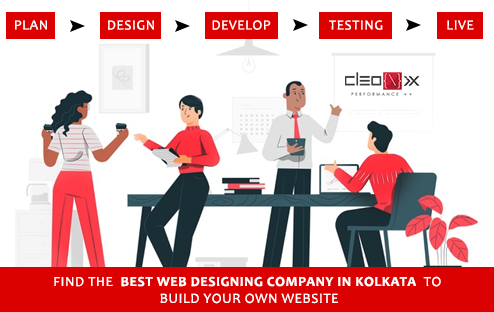
The website matters a lot as it is something that will be responsible to a large extent for drawing up the attention of new potential clients and customers. Once your website is down you should know your business has to pay a huge toll as it is going to start its downward journey now. Be that the case won’t you want your website to be built by some professional hand so that you can have the best ever possible design for your website? The best Web Design Company in Kolkata here can deliver you the finest websites, designed according to your requirements.
All you need to do is deliver your long-term visions and goals that you have planned up for your business and professionals out here have gathered years of experience in turning those visions and goals into some charismatic representation through your website. Clients and customers are bound to love the site at the first glance, and that is what matters the most. Once they have liked your site, there is most probably that they ultimately become your regular customers and prove to be reliable clients.
You can experience real success in turning your visions into well-represented goals. The works already done by professionals will portray a clear idea about the expertise and skill that is put into every new website to be designed. All high design features and the latest web designing technologies will be incorporated in every site that will be designed by professionals
You can also get help over a few other kinds of services. Services provided overall are Website Design, Web Development, Mobile Apps Development, E-Commerce solutions, Identity Design, Brand and Design Strategy, Print and Publishing Design, SEO & PPC, Concept Development, and Art Direction.
Also in these cases, another point of concern is affordability. It is absolutely not desirable for anyone to invest a huge amount in designing a new website. This is the place where you can hire expert professionals for designing your website at affordable and reasonable prices. You can relax totally after you have handed over the responsibility of building up your website to some expert hands out here.
Cleonix Technologies is the ideal place where you can hire expert professionals for designing your website at affordable and reasonable prices. To know more about our services then click here:- https://www.cleonix.com/services

There are several web applications that can please your eyes but they fail to imprint a good impression to meet business requirements if your website design does not have a good appeal.
But when a professional website development company makes a web application, then they always take care of one important thing, i.e.; The first impression of your website must be long-lasting among your visitors.
In an online market, the audience has immense options but you as a service provider have only about 5 seconds. Your time is very limited to draw the attention of your visitor.
So you must have a professional web design that is able to put your brands’ image among the visitors very seriously without causing damage to the reputation and business plans.
Whenever a user visits a website, they primarily notice the design, its responsiveness, its style, color scheme, content layout, while navigating over the web pages, and how loudly the message is being conveyed to the visitors.
These are the traits of professional web development. A website is a platform where you can put in engaging content, related to your products, and services. While the visitor is the supreme judge of everything at your site before making a purchase.
That is the reason we said that the first impression must last forever. If you want to create such a situation you have to get it done by a professional web design company.
There are many web development services in the market from where you can take help in website development. Here are 9 important tips to follow while you develop a professional web design.
Make Your Website Mobile Friendly
Nowadays, it’s almost natural that online visitors at your website get connected from mobile devices like smartphones, and tablets. Furthermore, the mobile crowd over the internet is around 53%, and the desktop and laptop traffic is 47%.
This means the mobile has overpowered the desktops and laptops. This is why you need to get your site mobile responsive. You are required to optimize your website as per the mobile smartphones.
Now, what does it mean by mobile optimization? It means constructing your site in such a way that it must appear responsive to every mobile platform and operating system present all over the world.
Furthermore, your website should be able to adapt, small screen sizes, small fonts, compatible UI/UX, and easy navigation. While you design an idea for professional design, you have to consider making your website mobile responsive.
Reduce The Page Loading Time
It doesn’t sometimes matter to the visitor how professional your website is in look & feel. If he or she had to wait for 8 seconds for the web page to load, then you would know that you have already lost the visitor.
According to the reports from Kissmetrics, if a web page takes a longer time to load, then the people start diverting from it; this increases the page abandonment rate.
Not only this, but the slow loading time has a negative on your website and affects your Google search ranking.
The loading time also affects page designs, programming, and development. Hence, you must do something to control the decrease in the loading time of every web page. The best is to bring it down under 3 to 5 seconds.
To increase your page load speed, you can optimize the code, reduce too many links, reduce the number of redirects, optimize the images, etc.
Choose The Best Design Option As Per Needs & Budgets
One of the most effective decisions that you have to make while you develop your website is whether you should use the template design or you will go for your own custom design.
At present days, there are a number of website templates whose job is to make web development easy and make professional-looking sites. On the other hand, custom websites involve more resources, time, manpower, and budget.
However, a template-based design can not be called at all a professional web development. But a custom site development has the power to include exclusive elements for increasing the overall web functionality. So, choose accordingly!
Use CAT (Call To Action) Buttons
A website with more than two CTAs at its every web page does not look professional. Also, it creates confusion among your visitors. As a result, you might lose your visitors on your web page.
Never confuse your visitors with more options. To attract their attention, make a professional website design by placing CTA buttons strategically on every webpage as a strategy.
Use High- Quality Images
Large and high-quality images always get the website loading speed slower, but visitors love to watch high-quality videos and images. Now what we can do to satisfy the audience is to keep the web page look more professional.
To attract the crowd with good quality images and increase the rate of conversion you upload them on your website. Optimization maintains the quality of the image but reduces the size of the images.
This is the way how with the help of quality images, you can make your website look professional.
Use Better Fonts
In website designing, the fonts are not just letters. With every color, they can choose their style also. Thus, choosing a professional font is really important.
Always choose the font style which matches your culture and business style and place it properly on your web page.
Color Scheme Should Be Good
The colors which you choose for making your website imprint a great impact on the design. So do not pick any color just because it is your favorite.
Keep Website Design Simple
Whenever you are occupied designing a website, your main focus should be on projecting the best experience UX/UI to the visitors and your online crowd.
For this, the best option is to keep the website structure, content layout, and web styling. If you try to deliver a vibrant experience with simplicity at its base, then you will create a professional web design!
Hire A Professional Web Design Company
You have already learned all the tips for designing a website in a professional manner! Implement all these professional web designing tips, make your website interactive, intuitive, attractive, mobile-responsive, and color impressive.
About the author
Cleonix Technologies
A professional Web Development Company is highly focused on providing world class and best in the industry standard services in every domain that we work upon.

 AJ 14, Salt Lake, Sector 2, Kolkata - 700091 |
AJ 14, Salt Lake, Sector 2, Kolkata - 700091 |  743 Virginia Ave NE Atlanta, GA 30306
743 Virginia Ave NE Atlanta, GA 30306










